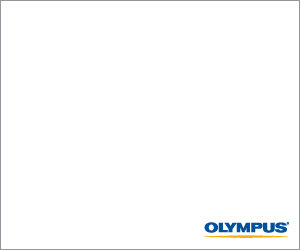|

Digital Camera Review by: Katrina Putker
Are you a chronic self-portrait shooter or frequent happy snapper whose photos are generally of people? Or do you upload a lot of images to social networking sites such as Facebook or MySpace? If your answer is yes to either of these questions then you’re likely to be excited about an interesting new feature on the Olympus Mju 7000 called ‘beauty mode.’
Initially I was sceptical as to its function and ability but was quickly proven wrong after a little experimentation. When selected, it photographs an image just as the Mju 7000 would in any other mode; the difference being in the processing that occurs in-camera afterwards when the 7000 works its internal magic for approximately 30 seconds (general camera operation is unavailable during this period) and leaves you with both an original and a beautified version of the portrait just taken.
Exactly how it’s done, I’m not sure, but beauty mode does create a lightly airbrushed skin tone thus giving it a more even and clean appearance, which isn’t necessarily as noticeable on the camera’s LCD as it is on a laptop or PC monitor. You even have the option to enhance the automatic effect generated and to create new ones (dramatic eye, sparkle eye etc.) all in-camera with the turn of a dial and a push of a button. It’s a great function to play around with and is probably one that teenage girls especially are going to love.
Obviously, the overall effect is increasingly dramatic as the subject fills more and more of the frame but that’s not to say it won’t work as well for couple and group shots etc. It is important to be aware however, that the images processed in beauty mode are some 40% smaller files than those shot in other modes and so the ability to create enlarged prints decreases somewhat.
You may question if beauty mode alone is enough to make me recommend the Mju 7000. Well, the answer is absolutely not. But, thankfully, there is an abundance of additional reasons to suggest it as an excellent choice within the current compact digital camera market.
Most notably, the 7000 model is an addition to one of the most popular ranges of Olympus cameras available: the Mju series, and fully lives up to its cousins both in terms of its clean, slim lined design and its image quality. Despite the Mju 7000’s tiny frame and good looks, it encompasses the power of a high-definition 12 mega pixel dual shake proof CCD and the Olympus TruePic III image processing engine. Lose the jargon and this simply means that this camera will constantly deliver high quality images that are clear, bright and accurately coloured.
In-built shadow adjustment and face detection technologies combine in the Mju 7000 to help ensure correctly exposed images are achieved (when in scene or camera mode) by correcting auto focus and exposure whenever people are in frame so that a balance of lighting is achieved between exposure on the subject’s face/s and the background. So, instead of having well-lit faces and a background in shadows (often indoors) or over-exposed (mostly outdoors), a more even distribution of light is perceived.
The 7000’s efficient manual zoom operation quickly extends to an impressive 7x optical in less than 1.5 seconds allowing you to get super close to subjects further away and with the help of macro and super macro modes, you can get even closer to subject’s already at your fingertips.
A triple-tiered, 6.6 – 46.2mm protruding glass lens expands quickly upon start-up helping to reduce lag at the power on stage to approximately 1.25 seconds. As a result, the first shot can be fired (given sufficient lighting conditions such as daylight or indoor tungsten/fluorescents) within around 3 seconds. In low-light conditions, it will take the Mju 7000 a few more moments to adjust and focus on a single point, just as it would with any other compact camera of its kind.
The menu system used is fairly easy to navigate once it’s understood that two menu platforms exist: one in shooting modes and another in playback. The dial and buttons on the 132g body are clearly labeled meaning those familiar with camera function icons will transfer well to the 7000 and those who aren’t, will learn swiftly with a quick flick through the 69-page instruction manual. 
Overall, functionally is good with the exception of the processing delay between pictures, which is approximately 5 seconds. For most, it shouldn’t be a problem but for impatient shooters it may prove somewhat trying.
Other useful and novel features not to be overlooked in the Mju 7000 include movie mode, 15 different scene modes and particular favourite: various in-camera editing abilities that make it so easy to fix redeye, adjust shadows, enhance the effects of beauty mode, resize, crop, colour edit, create calendars etc. in-camera and with the touch of a button or two. Basically, it’s fun to experiment with the Mju 7000 and all of its features and as such, one’s imagination and creativity is both encouraged and fostered.
Taken as a whole, the Mju 7000 is a lightweight unit cleanly designed to integrate with the lifestyle of the modern compact camera user: keep it in your bag, pocket, briefcase etc. and use it to record moments in your life with a sense of ease and ability that can be trusted to deliver quality images consistently.
That being said, the difficulty lies not in deciding whether or not the Mju 7000 is a worthy compact unit that delivers on all fronts but instead, how to decide between the 7000 model and one of its cousins from within the highly popular and successful Olympus Mju series!
| Appearance rating |
4 stars |
| Functionality rating |
3.5 stars |
Image quality
|
4 stars |
Lens quality
|
4 stars |
| View finder / LCD screen |
4 stars |
| Value for money |
4 stars |
| RRP (AUD) |
$499 |
 |
|
| Effective Pixels |
12 Million mega pixels |
| Image Sizes |
6 Sizes |
| Lens - zoom wide [mm] |
37mm (35mm equivalent ) |
| Lens -zoom tele [mm] |
260mm (35mm equivalent ) |
| Lens - Optical Zoom |
Yes, 7x |
| Resolution Settings |
From 640 x 480 to 3648 x 2736 |
| Shooting Modes |
15 Scene options |
| Face Detection |
Yes, up to 16 faces |
| Manual Focus |
No |
| Auto Focus |
Yes |
| Focus Range [cm] |
70cm - infinity |
| Aperture Range |
F3.5 - F5.3 |
| Aperture Priority |
No |
| Macro |
Yes |
| Macro Range [cm] |
10cm - infinity (wide), 60cm - infinity (tele) |
| Shutter Speeds |
1/4s - 1/2000s (up to 4 sec. in night mode) |
| Shutter Priority |
No |
| ISO |
64 - 1600 |
| LCD Monitor |
Yes |
| LCD Size |
3" LCD Screen |
| Viewfinder |
No |
| Flash |
Auto, Red-Eye Reduction, Fill-in, OFF |
| Hot Shoe |
No |
| White balance |
Auto, Overcast, Sunlight, Tungsten, Fluorescent 1-3 |
| Self Timer |
Yes, 12 seconds |
| Movie Options |
Yes. Limited only by memory card size. |
| Video Out |
Yes |
| Storage Type |
512MB ~ 2GB xD, Micro SD via MASD-1 Micro SD adapter (included) |
| Storage Included [Mb] |
16MB Internal Memory |
| Image / Audio Formats |
JPEG, EXIF 2.2, PIM III, DPOF |
| Connectivity |
USB |
| Power Source |
D-7ACA AC Adapter with CB-MA1 Power coupler |
| Battery Options |
Li-42B LI-Ion |
| Dimensions |
96.4mm x 55.9mm x 25.3mm |
| Weight |
132g |
|











